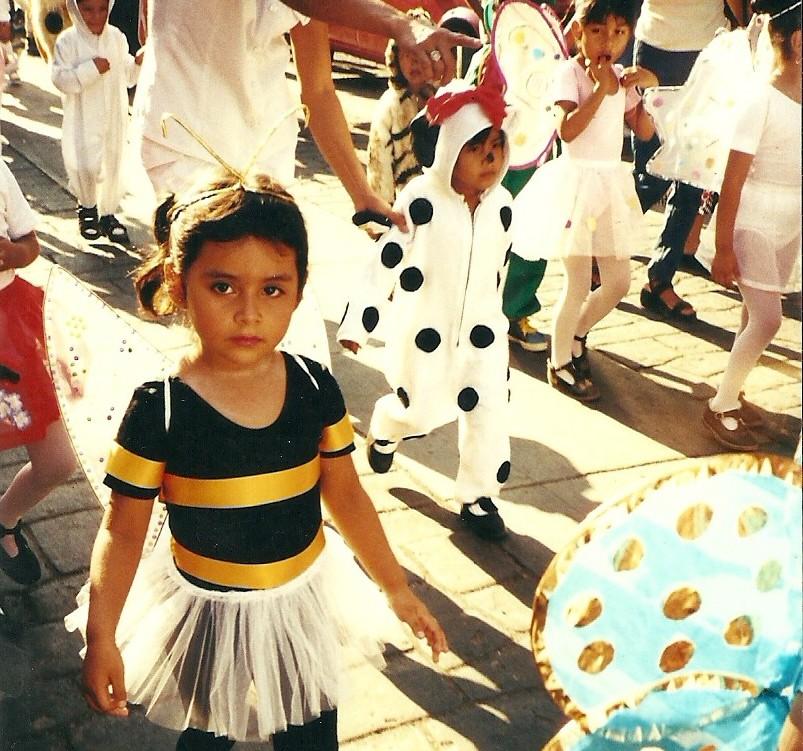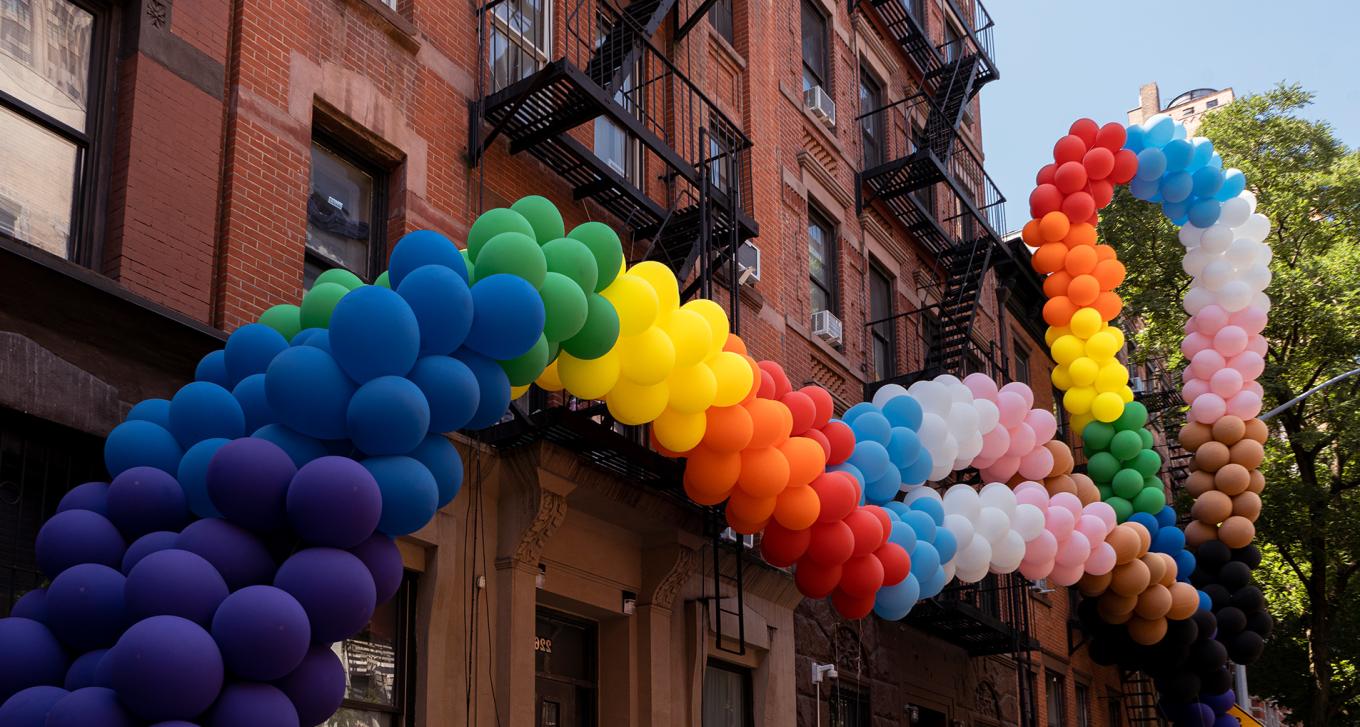
Insights
Mi Cuerpo Intersex: Entre la Cultura y la Patologización / My Intersex Body: Between Culture and Pathologization
Region(s)
TOPIC(s)
Type
Commentary
Author(s)
Publish Date
October 24, 2024
Share
English version below.
Mi Cuerpo Intersex: Entre la Cultura y la Patologización
México es un país ampliamente diverso y la experiencia intersex también lo es; algunas personas pasan por intervenciones quirúrgicas genitales no consensuales, otras no; algunas personas pasan por situaciones de discriminación y violencia cuando sus variaciones de las características sexuales son visibles, mientras que otras no tienen que enfrentarse a eso. Mi historia es un ejemplo de cómo la diversidad etnocultural de México puede atravesar la intersexualidad. He aquí lo que me ha ocurrido.
Nací en 1996, en un hospital privado de Juchitán, Oaxaca; Juchitán de las flores, Juchitán de las Intrépidas, Juchitán de las Muxes, o como diría Elvis Guerra, Muxitán. Una pequeña ciudad en la que se habla el zapoteco, una lengua en la que no existen los géneros gramaticales. Cuando nací, nadie notó nada inusual en mi cuerpo; pero, un par de años después, este comenzó a cambiar. Inicié la pubertad a tan solo dos años de edad; sin embargo, no era la típica pubertad que atraviesan las niñas, sino una pubertad más similar a la que suelen presentar los niños. Mis padres me llevaron al médico, al ISSSTE [Instituto de Seguridad y Servicios Sociales de los Trabajadores del Estado] para ser exactos. Pasé por muchas revisiones genitales y análisis clínicos, cuyos resultados se negaron a entregar a mis padres. Al final, el endocrinólogo solamente dijo que yo estaba completamente sana y que me encontraba atravesando un proceso completamente normal, por lo que no había nada de qué preocuparse. Así que volvimos a casa y continuamos nuestras vidas como si nada hubiera ocurrido.
Cuando entré al preescolar, ya tenía vello púbico y mis genitales no se veían como unos genitales típicos femeninos ni como unos genitales típicos masculinos. Yo era consciente de todo eso porque en mi pueblo era común ver a los niños jugando desnudos en las calles o ver a las mamás bañando a sus bebés en los lavaderos que tenían en el patio. Crecí preguntándome por qué mi cuerpo era tan distinto; mi mente constantemente era acechada por las preguntas: ¿Qué soy: un niño con un pene pequeño o una niña con una cosa grande entre las piernas? ¿Por qué no recuerdo mis genitales sin vello púbico? ¿Por qué, si soy una niña, mi apariencia es más masculina que femenina? En mi casa no se podía hablar de eso, tenía que callar.
Mi apariencia masculina era muy notoria. Cuando estaba en la primaria, tenía mucho acné en el rostro, abundante vello corporal, el torso ancho y las caderas estrechas, me comenzaba a salir vello facial y tenía la voz grave. Nunca recibí comentarios negativos, despectivos o irrespetuosos por parte de la gente; en ningún momento me trataron de una manera distinta y tampoco me discriminaron. Al contrario, mis maestras, mis compañeros de clase y la gente en general me respetaban mucho y me mostraban su admiración debido a mis buenas calificaciones. Sin embargo, las dudas no dejaban de atormentarme.

Cuanto tenía 14 años, decidí ir al ISSSTE para aclarar mis dudas. Ese día, me hicieron desnudarme tres veces ante tres médicos especialistas, quienes revisaron cada rincón de mi cuerpo. Al final de la consulta, uno de ellos me dijo: “tú sabes que en este mundo existen hombres y existen mujeres, eso es lo normal; pero tú no eres ni hombre ni mujer, eres anormal. Tú no eres normal, eres anormal”. Tenía solo 14 años y mi vida se derrumbaba. Pasé de ser un ser humano a ser un monstruo. No obstante, me rehusaba a aceptar esas palabras y comencé a investigar en internet. Inicié investigando qué era el pseudohermafroditismo femenino hasta que encontré algo llamado Hiperplasia Suprarrenal Congénita, lo cual explicaba perfectamente mi experiencia en esos primeros catorce años de vida y aclaraba mis inquietudes.
Me sentía sola en el mundo, así que decidí buscar a otras personas como yo. Entonces, ingresé a un sitio llamado Yahoo Respuestas y publiqué que era pseudohermafrodita femenino. Gracias a ello, varias personas se pusieron en contacto conmigo, entre ellas, algunas personas nacidas con variaciones de las características sexuales. A partir de ese momento, yo ya no estaba sola, ahora conocía personas que me comprendían y me brindaban su apoyo.
A finales del mismo año, un endocrinólogo me confirmó que tenía Hiperplasia Suprarrenal Congénita (HSC). Con eso, mis dudas quedaron resueltas; ahora mi situación corporal tenía un nombre y, aunque mi cuerpo era patologizado cada vez que acudía a mis citas médicas, de alguna manera eso me daba tranquilidad. Busqué más información acerca del tema; acudí nuevamente a Yahoo Respuestas, pero esta vez publiqué que tenía HSC y, gracias a eso, algunas chicas de México y de otros países me contactaron para intercambiar experiencias. En esa travesía me encontré con la palabra “intersexualidad”, la cual se convirtió en el término de búsqueda para continuar investigando. Ahora, intersexual era la palabra. Yo ya no era la persona enferma y anormal que me habían hecho creer. Intersexual era mi cuerpo, intersexual era yo.
Recuerdo que tenía solamente quince–casi dieciséis–años cuando el médico le pidió permiso a mi papá para tomarme fotos desnuda y le dijo a mi mamá que tenía que llevarme con un cirujano plástico para que me colocaran implantes mamarios y me hicieran una clitoridectomía. Mis padres me llevaron a ver al cirujano plástico; afortunadamente él dijo que no se atrevía a realizar ninguno de esos procedimientos, mucho menos en una adolescente. Poco después, el endocrinólogo tuvo que mudarse de ciudad. En su lugar, llegó una nueva endocrinóloga, quien me explicó que esas cirugías no eran necesarias y que era yo quien debía decidir si quería operarme o no. En ese entonces, me encontraba cursando el bachillerato. En las horas libres les contaba a mis compañeros de clase acerca de la intersexualidad, les contaba acerca de distintas variaciones existentes y de las cirugías genitales. Ellos se mostraban muy interesados y me hacían preguntas, también mostraban empatía. No me atreví a decirles que yo era una persona intersexual, pero sabía que, si en algún momento lo hacía, ellos no me rechazarían.
Hace unos diez años conocí Brujula Intersexual y, poco a poco, fui encontrándome con más personas con cuerpos intersexuales. Tiempo después, comencé a colaborar con algunos grupos de apoyo en línea creados y gestionados por Laura Inter, la fundadora. Ella me ponía en contacto con personas con experiencias de vida similares a las mías y nos dimos acompañamiento emocional mutuamente. En 2021, comencé a integrarme de una manera más cercana en las actividades y proyectos de la organización.
Aun con todos esos años de contacto y apoyo, no fue hasta julio de 2022 que conocí a Laura Inter en persona cuando participé en un círculo de estudios organizado por Vulgar.mx. En esa ocasión, después de aproximadamente una década, Laura Inter y Eva Alcántara fueron a mi encuentro. Ese día era mi cumpleaños número 26; mi regalo, ellas. En ese momento, una puerta se abrió en mi camino y me introdujo a un panorama distinto de la vida y de mi persona. Desde entonces, mi participación en las actividades de Brújula Intersexual y del activismo intersex se volvió cada vez más constante.
He pasado por varios médicos; algunos han patologizado mi cuerpo y me han prescrito modificarlo; otros me han hecho ver que esa decisión me corresponde solo a mí. Las personas en mi entorno siempre me han tratado con respeto y no he sufrido discriminación por mis características sexuales. Hoy comprendo que el trato positivo que he recibido ha estado influenciado en gran medida por la cultura en la que me he formado, por el tercer género que desde tiempos ancestrales ha existido en mi pueblo y por la lucha que ha realizado durante décadas, por una lengua indígena que nos ha hecho ver que, sin importar cuál sea nuestro género, todos somos materia con un paso temporal en este mundo. En México habitan decenas de pueblos indígenas y centenas de lenguas originarias, hay muchas variaciones de las características sexuales, hay muchas formas de vida y de ver la vida, hay muchos cuerpos sexuados e intersexuados, hay muchas formas corporales. Las variaciones corporales intersexuales son tan diversas como la multiculturalidad en México.
My Intersex Body: Between Culture and Pathologization
Mexico is a widely diverse country, and so is the intersex experience here. Some people undergo non-consensual genital surgeries; others do not. Some people experience discrimination and violence when their variations in sex characteristics are visible, while others do not have to face that. My story is an example of how the ethnocultural diversity of Mexico can intersect with intersexuality. Here is what happened to me.
I was born in 1996 in a private hospital in Juchitán, Oaxaca; Juchitán of the Flowers, Juchitán of the Intrepids, Juchitán of the third-gender Muxes, or as Elvis Guerra would say, Muxitán. A small city where Zapotec is spoken, a language in which grammatical genders do not exist. When I was born, no one noticed anything unusual about my body, But a couple of years later, this began to change. I started puberty when I was just two years old. However, it was not the typical puberty that girls go through, but rather a puberty more similar to what boys usually experience. My parents took me to see a doctor at a public health services clinic for government workers (Institute for Social Security and Services for State Workers, ISSSTE), and I went through many genital examinations and clinical tests, the results of which the clinic refused to turn over to my parents. In the end, the endocrinologist only said that I was completely healthy and going through a normal process, so there was nothing to worry about. So we returned home and continued our lives as if nothing had happened.
When I entered preschool, I already had pubic hair, and my genitals didn’t look like typical female genitalia or typical male genitalia. I was aware of all this because, in my town, it was common to see children playing naked in the streets or to see mothers bathing their babies in the sinks they had in the yard. I grew up wondering why my body was so different; my mind was constantly haunted by the questions: What am I: a boy with a small penis or a girl with a big thing between her legs? Why don’t I remember my genitals without pubic hair? If I’m a girl, why is my appearance more masculine than feminine? In my house, you couldn’t talk about it; I had to keep quiet.
My masculine appearance was quite noticeable. I had abundant body hair, a wide torso, and narrow hips. I was beginning to grow facial hair, and I had a deep voice. However, I never received negative, derogatory, or disrespectful comments from people; at no time did they treat me differently or discriminate against me. On the contrary, my teachers, my classmates, and people in general respected me a lot and showed their admiration for my good grades. However, doubts did not stop tormenting me.

When I was 14, I decided to go to the ISSSTE to clarify my doubts. That day, three specialist doctors made me undress and examined every corner of my body. At the end of the consultation, one of them told me: “You know that in this world, there are men and there are women; that is normal, but you are neither man nor woman; you are abnormal.” I was only 14 years old, and my life was falling apart. I went from being a human being to being a monster. However, I refused to accept those words and started researching on the internet. I began researching what female pseudohermaphroditism was until I found something called Congenital Adrenal Hyperplasia, which perfectly explained my experience in those first fourteen years of life and clarified my concerns.
I felt alone, so I looked for other people like me. I went on a site called Yahoo Answers and posted that I was a “female pseudohermaphrodite.” Thanks to this, several people contacted me, including some people born with similar variations in sex characteristics. From then on, I was no longer alone; I had met people who understood and supported me.
At the end of the same year, an endocrinologist confirmed that I had Congenital Adrenal Hyperplasia (CAH). With that, my doubts were resolved. Now, my bodily situation had a name, and although my body was pathologized every time I went to my medical appointments, somehow, that gave me peace of mind. I looked for more information about the topic; I went to Yahoo Answers again, but this time, I also shared online that I had CAH, and, thanks to that, some girls from Mexico and other countries contacted me to exchange experiences. On that journey, I came across the word “intersexuality,” which became the search term to continue researching. Now, intersex was the word. I was no longer the sick and abnormal person I had been led to believe. Intersex was my body; intersex was me.
I remember being only fifteen, almost sixteen, when my doctor asked my father’s permission to take nude photos of me; he then told my mother that she should take me to a plastic surgeon to have breast implants and a clitoridectomy. Fortunately, the surgeon said he did not dare to perform any of those procedures, much less on a teenager. Shortly after, my endocrinologist moved away. I began to see a new endocrinologist, who explained to me that these surgeries were not necessary and that it was up to me to decide if I wanted to have surgery or not. At that time, I was in high school, and I told my classmates about intersexuality; I told them about different existing variations and genital surgeries. They were very interested and asked me questions; they also showed empathy. I didn’t dare tell them that I was intersex, but I knew that if I ever did, they wouldn’t reject me.
About ten years ago, I found Brujula Intersexual and, little by little, met more people with intersex bodies. I began collaborating with some online support groups created and managed by Laura Inter, the founder. She put me in contact with people with similar life experiences, and we gave each other emotional support. In 2021, I became more directly involved in the organization’s activities and projects.
Even with all those years of contact and support, it was not until July 2022 that I finally met Laura in person when I participated in a study circle organized by Vulgar.mx. On that occasion, after nearly a decade, Laura Inter and Eva Alcántara came to meet me on my 26th birthday; they were a true gift. At that moment, a door opened, giving me a different perspective on life and myself. Since then, my participation in Brújula Intersexual activities and activism has increased.
I have been through several doctors; some have pathologized my body and prescribed that I should modify it. Others have made me see that this choice is up to me. The people around me have always treated me with respect, and I am fortunate not to have suffered discrimination due to my sex characteristics. Today, I understand that the positive treatment I have received has been largely influenced by the culture I grew up in, by the third gender that has existed since ancient times in my town, and by the struggle that third gender people have been carrying out for decades, by an indigenous language that has made us see that, regardless of our gender, we are all matter with a temporary passage through this world. In Mexico, there are dozens of Indigenous peoples and hundreds of native languages. There are many variations of sex characteristics, and there are many ways of life and ways of looking at life. There are many sexed and intersexed bodies, and there are many forms of the human body. Intersex variations are as diverse as the many cultures that coexist in Mexico.

Take Action
When you support our research, you support a growing global movement and celebrate LGBTIQ lives everywhere.
Donate Now